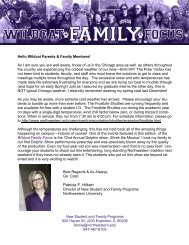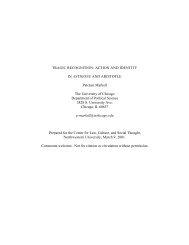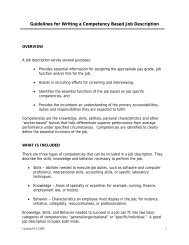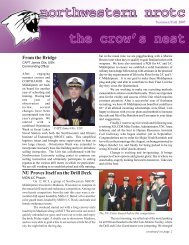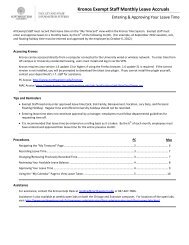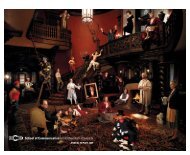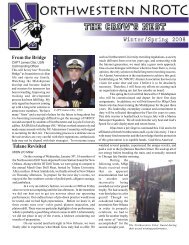Artistry Permits and Custom May Ordain - Northwestern University
Artistry Permits and Custom May Ordain - Northwestern University
Artistry Permits and Custom May Ordain - Northwestern University
Create successful ePaper yourself
Turn your PDF publications into a flip-book with our unique Google optimized e-Paper software.
18<br />
but intensive agricultural production yielded considerable surpluses of consumable<br />
commodities <strong>and</strong> provided the requisite wealth-base for a complex <strong>and</strong> urbanized society.<br />
“There is no memory of any famine there,” reported Francisco Barreto in 1571, 54 <strong>and</strong> with<br />
the exception of periods of extensive conflict 55 this observation holds true for the majority<br />
of the Swahili world. The mainl<strong>and</strong> coast was highly productive, <strong>and</strong> the Comoros,<br />
northwestern Madagascar, Mafia, Zanzibar, <strong>and</strong> Pemba produced enough surplus to<br />
export foodstuffs to distant points on the Swahili continuum. Kilwa even exported rice to<br />
Aden in the fifteenth century. 56<br />
Among agricultural commodities the coconut palm yielded the largest profits for<br />
agriculturalists as its fruit, timber, <strong>and</strong> fronds could all be marketed. Attesting to the<br />
variety of coconut palm products, a visitor to Nzwani noted that the residents sailed to<br />
Mozambique in vessels “of 40 tons made of Cocor, sowed insteed with Pinns, Cawked,<br />
tackled, <strong>and</strong> wholly fitted with that universal tree.” 57 Ownership of palm trees was<br />
considered a sign of wealth. Dos Santos described the Lamu archipelago town of Faza as<br />
“very rich <strong>and</strong> very prosperous, <strong>and</strong> with the best buildings, of all the cities of the coast,”<br />
having over 8,000 palm trees on its plantations (mashamba). 58 Dos Santos recalled that<br />
these were “the principal property <strong>and</strong> sustenance of these mouros; such that [after the<br />
Portuguese leveled the palm groves] there remained nothing there but a flat plane, where<br />
there once was the pride of the city of Ampaza.” 59<br />
54 “Lembrança da Carta de Francisco Barreto, Capitão-mor da Empresa do Senhorio de Monomotapa, para el-Rei,<br />
Moçambique, 1571 Agosto 5,” DPMAC. 8:206.<br />
55 For example, in the early seventeenth century internal rivalries between Sultan Omari <strong>and</strong> Mwana Khadija in<br />
Pate led to attacks on contenders’ coconut <strong>and</strong> fruit trees, destroying the local economy. “Stig<strong>and</strong> Version,” Pate<br />
Chronicle. 77.<br />
56 N. Chittick, “The East Coast, Madagascar, <strong>and</strong> the Indian Ocean,” 217.<br />
57 William Foster, ed., The Embassy of Sir Thomas Roe to the Court of the Great Mogul, 1615-1619, as narrated in<br />
his Journal <strong>and</strong> correspondence. Vol.1. Liechtenstein, 1967. 21.<br />
58 Dos Santos, Ethiopia Oriental. 1:385-6.<br />
59 Ibid, 1:397.<br />
Immense agricultural surpluses decreased the dem<strong>and</strong> for labor in the service of food<br />
production <strong>and</strong> allowed a majority of town-dwellers to become, for example, specialized<br />
exchange agents, skilled artisans, <strong>and</strong> religious practitioners—all highly developed spheres<br />
of activity by the 1500s. Thus Swahili society was underpinned by not only its agricultural<br />
economy but also its long-distance trading partnerships, political concern with economic<br />
arrangements, <strong>and</strong> specialization in the production of cloth, ships, monumental



